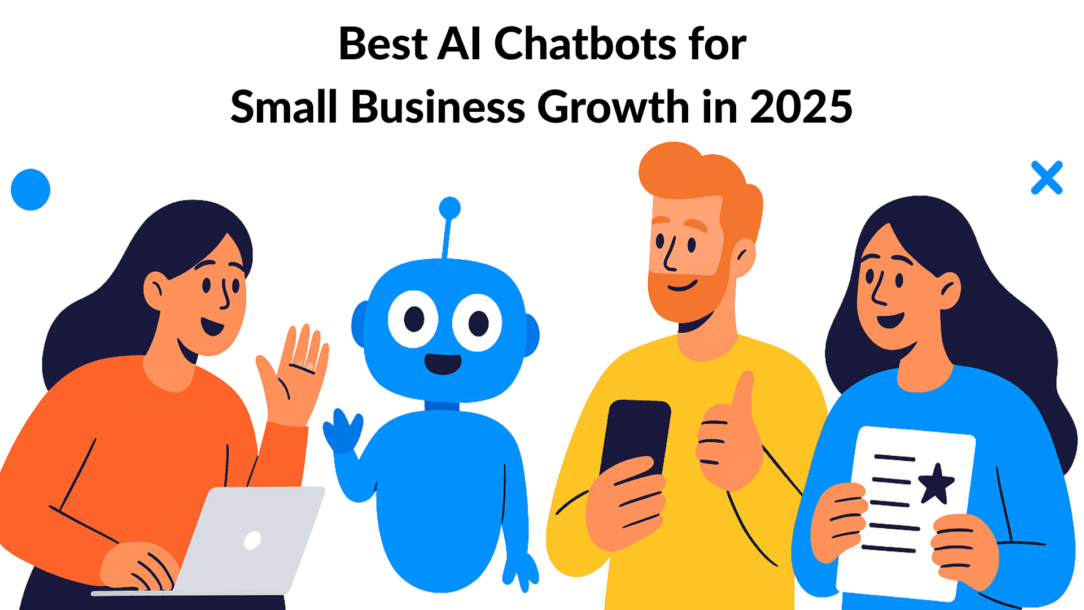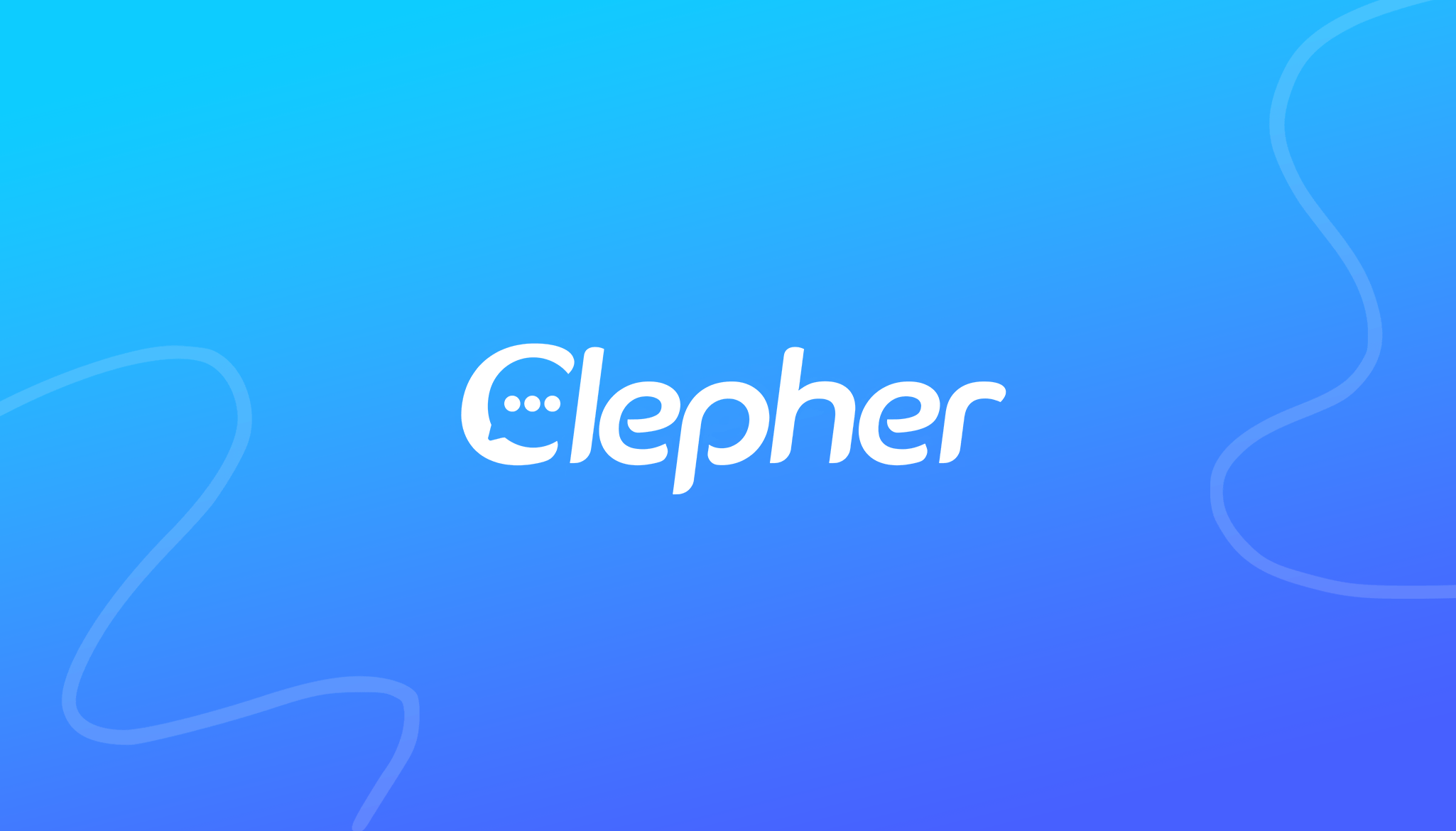When you start searching for the best AI chatbots for small businesses in 2025, you’ll quickly see names like Clepher, Tidio, and HubSpot appear again and again. There’s a good reason for that. These platforms combine the capabilities of modern AI models with affordability and practical tools—offering no-code builders and seamless integrations that make them ideal for businesses without a dedicated tech team.
How AI Chatbots Are Changing the Game for Small Businesses in 2025
Can you realistically answer every customer question, qualify every lead, and process every order—24/7? For most small business owners, that’s an impossible workload. This is where an AI agent becomes a true game-changer—the digital teammate that never sleeps, calls in sick, or takes a vacation. In 2025, chatbots have evolved from simple support widgets into essential tools for growth and customer engagement, reshaping how small businesses operate.
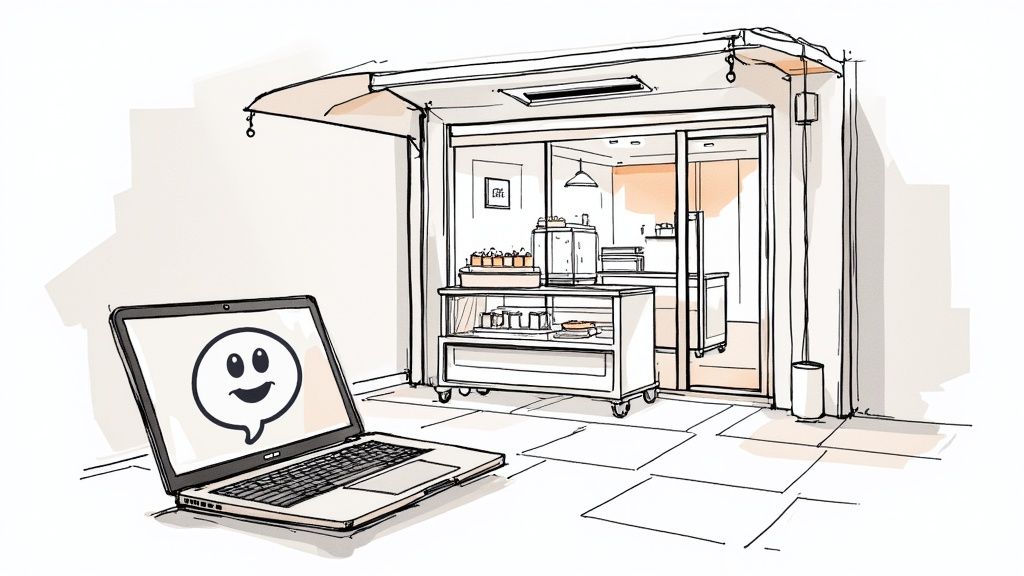
chatbots for small businesses
This isn’t just theory; it’s about practical, daily wins powered by AI tools that make small business life easier. For example, a local bakery I worked with used to miss out on late-night inquiries for custom cakes. By deciding to build a chatbot—a simple piece of conversational AI—they now guide customers through flavor options, sizes, and decorations automatically. The system even secures deposits and confirms orders long after the doors are closed. That’s a direct increase in revenue, all on autopilot through a custom AI setup.
Putting Your Operations on Autopilot
The real magic of a customer AI agent is its ability to handle repetitive, time-consuming tasks with perfect consistency. This automation frees you and your team to focus on what truly matters: building relationships, improving products, and strategizing your next big move.
Here’s what that looks like in the real world:
- 24/7 Lead Qualification: A boutique marketing agency uses an AI assistant to ask new website visitors about their budget, timeline, and goals. This ensures the sales team only spends time on calls with genuinely qualified leads, boosting their closing rate.
- Instant Customer Support: An e-commerce store can instantly answer the most common question—“Where is my order?”—by connecting its chatbot to shipping software. This conversational AI experience delights customers and drastically reduces support tickets.
- Automated Bookings: A local salon lets a customer AI agent handle appointment scheduling right on their website, filling their calendar without the endless back-and-forth emails.
With multiple AI agents working together—each focused on a specific part of your workflow—you create a scalable support and sales engine without the cost of hiring a massive team. It’s about working smarter, not harder, to meet modern customer expectations for instant service.
The adoption of AI chatbots and assistants is on a steady climb. Right now, about 16% of small businesses are using them, driven by the fact that 64% of customers prefer having 24/7 service available.
This round-the-clock support boosts satisfaction and takes a massive load off your team during off-hours. To see how these AI tools fit into the bigger picture, it helps to understand the broader world of AI applications in digital marketing.
Defining Your Chatbot Strategy Before You Choose
Picking a chatbot without a clear goal is like hiring an employee without a job description. You wouldn’t do it, right? Before you even compare features, you need a rock-solid answer to one simple question: What problem will this chatbot—or AI agent—solve for my business?
Getting this part right is the difference between an AI chatbot that becomes an essential part of your workflow and one that just frustrates your visitors. Without a defined purpose, you risk investing time and money into a tool that delivers zero real return.
Your goal doesn’t have to be complex or high-level. In fact, the more specific and measurable it is, the easier it will be to choose the right solution and evaluate its impact. Maybe you want to automate lead qualification, speed up customer responses, or collect data that helps your support team deliver better experiences—all achievable with the right AI actions in place.
Pinpoint Your Primary Objective
Take a closer look at your daily operations. Where do you and your team feel the most pressure? Is it the endless stream of repetitive customer questions that keeps your support team busy all day? Or perhaps it’s the time wasted on unqualified leads that never convert?
That’s where defining your custom AI agents comes in—each designed to handle a focused task. One could act as a sales chatbot that engages new visitors and filters leads, while another handles customer inquiries instantly. When every AI agent has a clear purpose, they collectively form a system that saves time, drives revenue, and scales your operations intelligently.
Here are a few common, high-impact goals that a chatbot can crush for a small business:
Reduce Support Ticket Volume:
Think about questions like “Where is my order?” or “What are your hours?” A chatbot can handle those instantly, freeing up your team to tackle the more complex issues that actually require a human touch. A subscription box service, for example, could use a bot to give instant shipping updates, potentially slashing support emails by 30% or more.
Increase Qualified Leads:
Instead of having your sales team vet every single person who fills out a form, let a chatbot do the initial legwork. It can ask key qualifying questions—like budget, timeline, and specific needs—before a prospect ever gets on a call. A marketing agency could use this to make sure they only book meetings with serious, ready-to-buy clients.
Automate Appointment Bookings:
Stop the endless email back-and-forth. A chatbot can integrate directly with your calendar to schedule demos, consultations, or service appointments 24/7.
This infographic breaks down how specific goals translate into real, measurable business results.
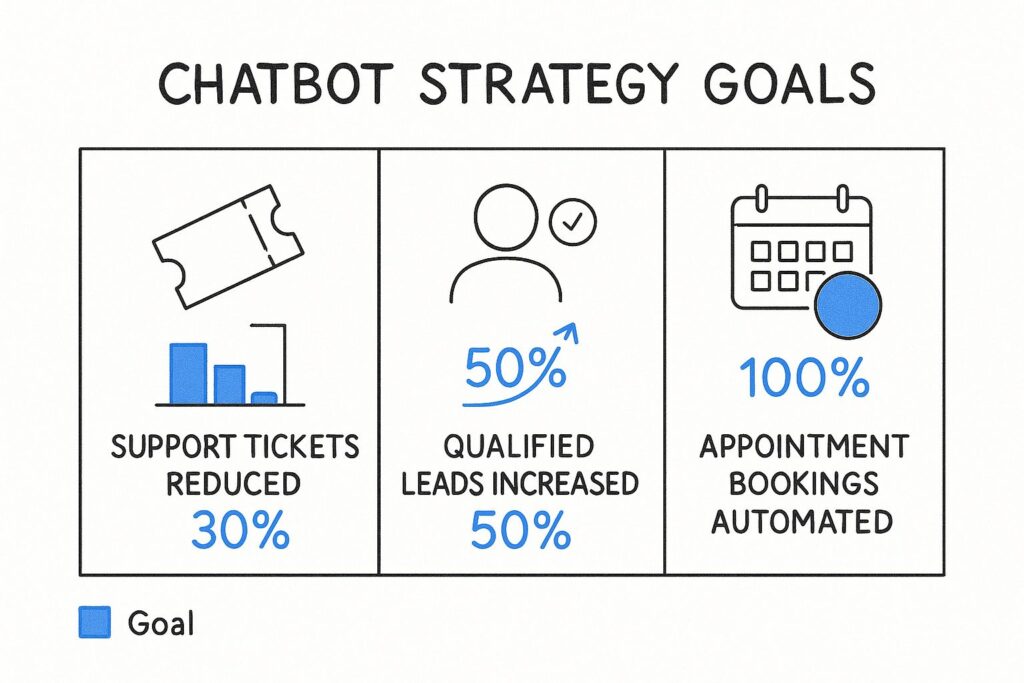
chatbot strategy goals
When you visualize your targets like this, it’s much easier to see the direct line between the chatbot’s job and your business’s growth.
Of course, your strategy also has to consider who the chatbot will be talking to. Crafting conversations that feel helpful and natural—not robotic—is impossible if you don’t understand your audience. Developing clear buyer personas helps you understand your ideal customer, which is a foundational step for any kind of effective communication.
A chatbot’s success isn’t measured by how “smart” it is. It’s measured by how effectively it achieves a specific, measurable business outcome. Define that outcome first, and your path to choosing the right chatbot becomes crystal clear.
Must-Have Features in a Small Business Chatbot
Not all chatbots are created equal. For a small business, picking one without the right capabilities is like hiring a salesperson who can’t talk. So instead of getting lost in the buzzwords, let’s focus on what truly matters—the non-negotiable features you need in the best chatbots for small business: one that solves today’s challenges and scales with you tomorrow.
There’s a reason the global chatbot market is projected to hit $46.64 billion by 2029. A well-built bot can handle up to 80% of routine questions and respond three times faster than a human agent. That’s real savings in time and money—plus happier customers. If you’re curious, you can explore more chatbot statistics to see the full impact these tools have on small businesses.
But to get those kinds of results, you need to focus on choosing the right AI chatbot builder—one that’s powerful, flexible, and designed for real-world use.
No-Code Visual Builder
Let’s be honest: most small business owners don’t have time to learn to code. That’s why a no-code chatbot builder is an absolute must. A drag-and-drop AI chatbot builder lets you design and adjust conversational flows without writing a single line of code.
Think of it like building with LEGO blocks. You connect different elements—a greeting, a question, a button—to map out your ideal conversation. This puts you in full control, allowing you to update your chatbot in minutes. Launching a new product or changing store hours? No problem—you can do it yourself.Seamless Integration Capabilities
Even the best AI chatbot isn’t useful if it can’t connect with your existing systems. Its true power comes from integration capabilities that link it to the tools you already use to run your business.
Here’s what this looks like in practice:
-
CRM Integration: When a visitor gives your bot their email, it automatically creates a new contact in your CRM (like HubSpot or Salesforce) and tags them as a hot lead.
-
Calendar Integration: A potential client wants to book a demo. Your chatbot checks your schedule, finds an open slot, and sends out calendar invites automatically.
-
E-commerce Integration: A customer asks, “Where’s my order?” The bot pings your Shopify or WooCommerce store, fetches the shipping details, and delivers an instant update.
When your chatbot communicates with your other tools, it transforms from a simple messenger into a true automation engine that actively supports your business operations.
Multi-Channel Support
Your customers aren’t just on your website—they’re on Facebook, Instagram, and WhatsApp. Multi-channel support means you can build one chatbot and deploy it across all the platforms where your audience already spends time.
This creates a consistent, seamless experience. Someone might start chatting on your website during their lunch break, then continue the same conversation on Facebook Messenger from their phone later—without losing any context. That kind of flexibility meets customers where they are and helps you capture leads you might otherwise miss.
Core Chatbot Features Comparison for Small Businesses
| Feature | Why It’s Important | Small Business Use Case Example |
|---|---|---|
| No-Code Visual Builder | Empowers you to create and edit conversations without hiring a developer. | A local bakery can quickly add a “Holiday Pre-Order” conversation flow to their chatbot in November without any technical help. |
| Integrations | Automates workflows by connecting your chatbot to tools you already use (CRM, calendar, etc.). | A consultant’s chatbot integrates with Calendly to book client calls directly, eliminating back-and-forth emails. |
| Multi-Channel Support | Provides a consistent experience for customers on your website, Facebook, Instagram, and more. | A clothing boutique uses one chatbot to answer sizing questions on their website and Instagram DMs, ensuring consistent answers. |
| Live Chat Handoff | Allows the chatbot to seamlessly transfer complex queries to a real person. | If a customer has a complicated complaint, the bot can say, “Let me get a team member for you,” and ping a human agent to take over. |
| Analytics & Reporting | Helps you understand what customers are asking and how well your bot is performing. | By reviewing chat logs, a SaaS company discovers many users are asking about a feature they don’t have, leading to a new product idea. |
Ultimately, choosing a chatbot with these foundational features ensures you’re investing in a tool that will not only handle today’s customer questions but will also grow alongside your business.
Launching and Optimizing Your First Chatbot
Getting your chatbot live is just the starting line—the real wins come from making it smarter over time. A successful launch isn’t about having a flawless bot on day one. It’s about building a solid foundation and then tweaking it based on how real people actually talk to it.
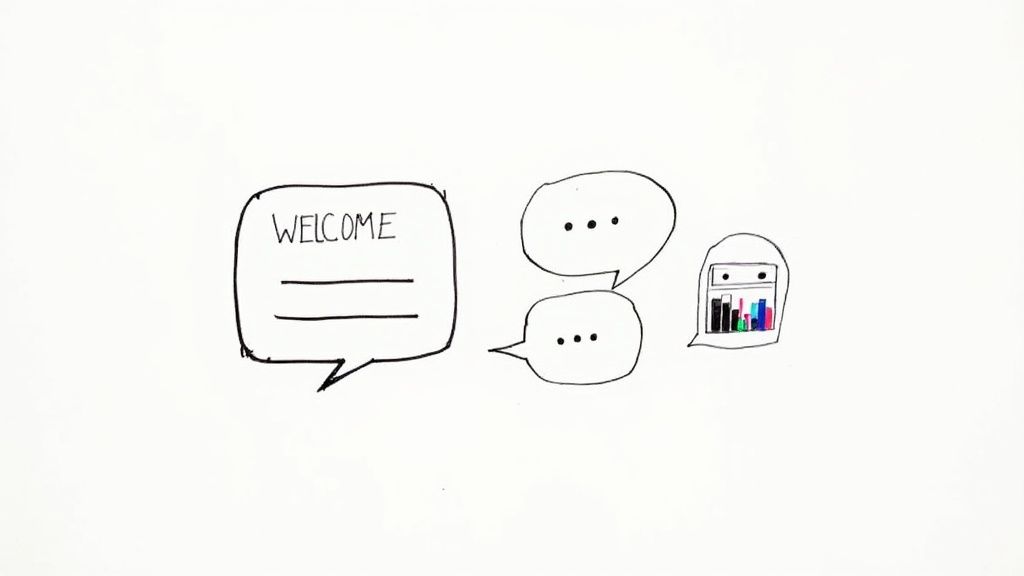
your first chatbot
First, craft a welcome message that actually does something. Ditch the generic “How can I help you?” and get proactive. A great welcome message tells visitors exactly what the bot can do and gives them quick-reply buttons to get started.
For an e-commerce store, it could be something like, “Hey there! I can help you track an order, check our return policy, or find the perfect gift. What are you looking for today?” That simple change guides the user and sets clear expectations right away.
Building Your First Conversational Flow
You don’t need a bot that knows the answer to everything. That’s a recipe for failure. Instead, focus on your top 3-5 most frequent questions. What are people constantly asking in your email inbox or support tickets? That’s your goldmine.
Build a simple, straightforward conversational flow for each of those top queries.
- “Where is my order?”: Create a flow that asks for the order number and email, then pulls real-time status updates from your shipping software.
- “What are your hours?”: Keep it simple. Just display your business hours and location clearly.
- Lead qualification: Ask a few qualifying questions like “What’s your budget?” or “What’s your company size?” before prompting them to book a call with your sales team.
Your bot needs to sound like it belongs to your brand. Give it a name and a personality. If your brand is playful, use emojis and a casual tone. If you’re more formal, keep the language professional. This consistency makes the whole interaction feel less, well, robotic.
Analyzing and Improving Over Time
The single most important thing to do after you launch is to analyze your chat logs. This is where the magic happens. Your chat history shows you exactly what customers are asking, in their own words.
Look for patterns. Are tons of people asking about a product you barely feature? That’s a huge marketing insight. Are they constantly getting stuck at a specific point in a conversation? That’s a flashing red light telling you to simplify that flow.
This cycle of reviewing and refining is what turns a basic bot into a powerhouse asset. For a deeper dive, checking out established chatbot best practices can give you a solid framework for your optimization strategy.
And please, always offer a seamless way to talk to a human. If the bot hits a dead end, it should say something like, “I’m not sure about that, but let me connect you with someone who can help.” A simple “Talk to a Human” button builds trust and stops users from getting frustrated.
Got Questions About Small Business Chatbots?
Even when you know you need one, pulling the trigger on the best chatbot for a small business can bring up some last-minute doubts. Let’s clear up some of the most frequent questions we hear from business owners.
How Much Is This Going to Cost Me?
This is usually the first question, and the answer is surprisingly flexible. Most top platforms have solid free plans that give you all the core features you need to get rolling. It’s the ideal way to test the waters without any financial risk.
Once you start growing, paid plans usually fall somewhere between $20 to $100 a month. This typically unlocks more complex automations, better analytics, and must-have integrations. Think about the cost through its ROI. If a chatbot helps you capture just one or two valuable leads you would’ve otherwise missed, it often pays for itself almost instantly.
Will a Chatbot Make My Business Feel Robotic?
This is a huge—and valid—concern. Nobody wants to sound like a corporate robot. But a well-designed chatbot can feel surprisingly human and genuinely helpful. The outcome is 100% in your control.
Here are a few quick tips to keep it personal:
- Give your bot a name. It’s a simple trick, but it instantly makes the bot feel like part of your team.
- Match your brand’s voice. If you use emojis and a casual tone in your marketing, your bot should too.
- Always have a human escape hatch. This is the golden rule. Make sure there’s a clear, one-click option for users to connect with a real person.
This hybrid approach is the sweet spot. You get the efficiency of automation when you need it and the personal touch when it matters most. It’s the best of both worlds.
Do I Need to Know How to Code?
Absolutely not. Gone are the days of needing a developer to build a simple bot. Modern chatbot platforms are built specifically for business owners, not programmers. They’re completely no-code.
Most feature intuitive, drag-and-drop visual builders that make designing a conversation feel like drawing a flowchart. Plus, most platforms are loaded with pre-built templates for common goals like lead generation or booking appointments. You can grab a template, customize the text, and get a working bot live on your site in under an hour.
Conclusion
Choosing the best chatbot for small business growth can transform how you interact with customers. With the right tools, you can build a chatbot that meets your business needs. Platforms like Clepher offer chatbot templates and a flow builder, making it easy to create AI-powered chatbots tailored to your brand.
Consider the features like AI orchestration and the ability to switch between AI models. This flexibility helps you adapt to the ever-changing landscape of customer interaction. Whether you need advanced AI capabilities or just a simple chatbot on your website, the 10 best AI tools can provide dozens of options to enhance your business.
AI chatbots are everywhere, and they’re not just a trend; they’re essential for any online business looking to thrive. Many chatbot platforms offer free trials, allowing you to explore what works best for you. Don’t miss out on the opportunity to leverage generative AI and advanced chatbots that understand customer behavior and preferences.
Ultimately, the right chatbot is the one that aligns perfectly with your goals. So, dive into the world of AI chatbots and discover how they can elevate your customer interactions and drive growth in your small business.
Ready to turn conversations into customers?
Clepher gives you an intuitive, no-code builder to design powerful AI chatbot experiences for your website, Messenger, and Instagram. Start automating your sales and support today!
Related Posts

